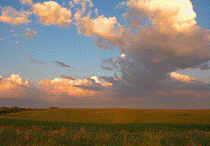
Proceedings of the North American Prairie Conferences
Date of this Version
2004
Document Type
Article
Abstract
At one time, 60% of Illinois' land area was covered with prairie, but 99% of that prairie has been lost. Currently, 2,300 acres (about 930 hectares) of remnant prairie is protected in the Illinois Nature Preserves System. Many of these sites were surveyed in the mid-1970s as part of the Illinois Natural Areas Inventory (lNA!). 1 analyzed vegetation data as relative frequency of herbaceous species. Data were analyzed using Detrended Correspondence Analysis (DCA) to determine environmental influences on species composition. I also resampled 29 of the original sites in summer 1998. In addition to collecting data on relative frequency of prairie species, I collected soils and had them analyzed for texture and nutrient availability. In both the 1970s and 1998 samples, moisture availability as related to a topographic gradient was the major environmental fac tor affecting species distribution and abundance. For the 1998 samples, there were relationships between ordinat ion axis scores and soil nutrients, but soil nutrients were not a major factor affecting species composition. When the 1970s and 1998 samples were compared, there were no major changes in species composition, but there were changes in species abundance. There was no conclusive evidence for loss of species from any sites, although there was an increase in abundance of introduced Eurasian weedy species between the 1970s and 1998.


Comments
Published in Dave Egan & John A. Harrington, editors, Proceedings of the 19th North American Prairie Conference: The Conservation Legacy Lives On..., University of Wisconsin-Madison, August 8-12, 2004 (Proceedings of the North American Prairie Conference, 19), Madison, WI: University of Wisconsin-Madison, 2004.